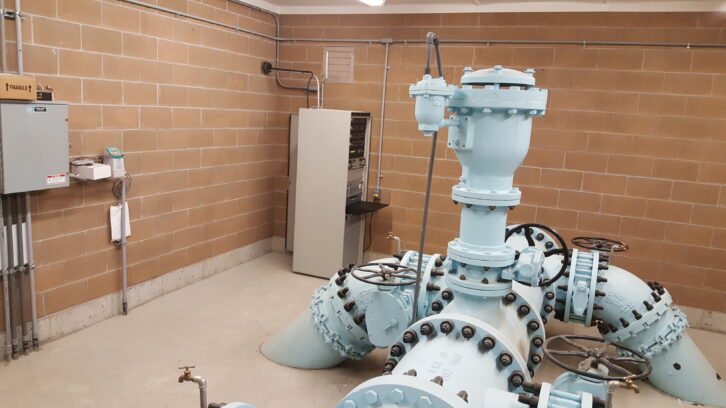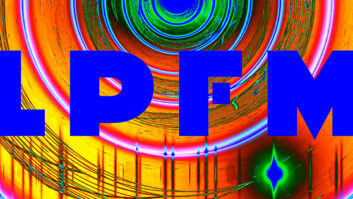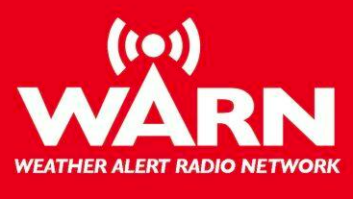A current Radio World ebook provides resources for new low-power FM broadcasters in the United States. This article is excerpted.
KVWJ received a low-power FM construction permit in the 2013 filing window. Originally licensed to the city government in Hyrum, Utah, the station was transferred in 2021 to Alumni Records. Friend Weller, former chief engineer of Utah Public Radio, is director of Alumni Records and led the creation of “J-95” from the start. He spoke at the 2024 Public Radio Engineering Conference; this is an excerpt.
When the radio bug bites, one never recovers. It’s a vow of self-imposed poverty that is only satiated by the orange glow of the final tubes, the sound of the record on the turntable through the on-air monitor with the crackle of distant lightning coming through the speaker, the majestic tower climbing into the heavens with its red and white bands during the day and beacons beckoning during the night.
My experiences may offer some insight for those who plan to launch an LPFM but have limited budget.
Who?
Friendships and professional relationships have been crucial to the launch and success of KVWJ. It’s all about networking, which is more than a means to an end. This is the kind of networking where friendships are made, favors are given — never intended to be collected upon — and bonds are created.

For instance, a friend and well-known consulting engineer asked why I wasn’t applying for an LPFM. I confessed that I couldn’t afford a frequency study. His response: “Who said anything about what it will cost? I’m asking why you aren’t applying!” “You’d do that for me?” Engineering was committed, mathematics applied and a mild second-adjacent waiver was requested. A construction permit was granted!
Another time I had to navigate a mountain of paperwork to correct mistakes made by an inattentive attorney. These repairs took place over the course of a three-hour telephone consult with a knowledgeable mentor. Again, friendships matter.
Your “who’s” also can swing a hammer, write computer code, provide muscle to raise a tower or help with a remote broadcast. There are people in your life who have the skills and desire to help — because they, too, can envision the tower lights or the glowing tubes.
What?
There are so many “what’s” in a radio station, even a small operation … not only the necessary equipment but cabinetry, furnishings and the structure itself.
KVWJ has often found itself between someone disposing of something and the nearest dumpster. State surplus sales, other stations and former engineers have all been resources for our equipment. “Freeware,” supported by computer-savvy friends who donated time to write scripts and code, allows us to create a listenable, enjoyable and profitable on-air offering.
Yes, there is plenty of software out there to schedule and play back; but there’s something to be said for handcrafting one’s systems and hearing them in the station’s signature sound.
KVWJ’s process may be complex but it works well. It involves moving all our music files into categories based on the desired frequency of playback and station imaging, saving files saved into M3U playlist directories using Winamp, and sorting them into an hourly rotation using Tobasco’s Amazing Clockwheel for a six-day duration requiring 14,000 minutes of music. We use ZaraStudio 1.6.2 to coordinate the music mini-playlists, time announcements, newscasts, underwriting or sponsorship statements, and other messages.
Another area where we are working to increase services at minimal expense is weather. For a time, a climate undergraduate student did an excellent job volunteering to record brief forecasts that aired twice an hour. Unfortunately for us, family considerations including a new baby required her to bid us a fond farewell. Our thoughts turned to newfangled AI. Our IT guru discovered a way to merge reasonably good AI speech with weather data to create an automatic forecast and temperature report for less than $50 a year.
These efforts to create good programming at low cost have succeeded. KVWJ may be a throwback but it is loved and supported by its community of license.
How many listeners have chased your spouse in the grocery store parking lot saying, “It’s you! It’s you! Don’t change a thing!” How many stations receive an unsolicited comment on the web: “This is in my opinion the single finest radio station I have ever listened to”?
Our 20,000 disc record library, thousands of CDs, hundreds of carts (yes, I know), our steam-powered computer system, a water cooler from the 1930s, a donated file cabinet and other discarded items are elemental pieces of what makes this KVWJ. Being able to do it on a shoestring budget makes this all the more rewarding.

Where?
Adequate studios can be built in Quonset huts, former gas stations, strip malls or storage bays. KVWJ’s is in my backyard.
I was able to construct a 300-square-foot studio using materials from a pedestrian construction sidewalk that I’d spotted as I rode my bike to work. The walk had been erected in front of an old structure that would be torn down to make way for a county administration building. The sidewalk was 126 feet long and 6-1/2 feet wide with a sloped roof, studs on two-foot centers and six nice moisture-proof exterior light fixtures.
I obtained permission from the general contractor to salvage these materials at the completion of their project, which would be more than a year later. That worked fine with my timeline for the LPFM.
When the time came, friends and I hauled the materials away, remanufactured them into building panels, and erected walls and roof. We added shingles and siding, power and phones. We installed windows that had been rejected by a local home improvement center. We ran electrical runs carefully to minimize the cost of wire. The dollars we’d saved paid for insulation and inexpensive paneling. We rescued studio cabinetry that had been destined for the dumpster at a local station but was still functional.
What about an appropriate transmitter site?
We sited KVWJ in a 900-square-foot city water utility building on a hillside 1.1 miles from the studio. The studio-to-transmitter link is via a donated pair of Barix codecs and Ubiquity radios. Our equipment occupies a single rack serviced by a 20-amp breaker.

Our tower consists of abandoned sections of Rohn 25G. It was erected by another friend who has decades of experience as a professional rigger and climber. The city provides us with power while we provide the city with public meeting coverage, patriotic program broadcasts and Fourth of July fireworks music.
Looking ahead, we hope to negotiate with an adjacent property owner — yet another friend — to relocate the transmitter site 500 feet away, resulting in an increase in altitude and adding sections of tower to attain the maximum height of 100 feet AGL. My friend, the consulting engineer, stands by if this can all be arranged.
That means we’ll need a new transmitter building. But by getting between a telecom crew and the dumpster, we’ve netted KVWJ a nice outdoor enclosure that only needs its HVAC unit rebuilt.

When?
Now! Keep your eyes open. What resources are right in front of you waiting to be tapped?
And don’t ever give up. I almost did. Am I glad I took one last chance! The city of Hyrum had applied for this station, but a change in administration resulted in cold feet. During the construction permit period the city decided not to pursue the license.
With six weeks left on the CP I made a final appeal. I offered to build the station as specified while forming my own non-profit to take over the operation in three years, when it was eligible for transfer.
The city was amenable, we found an attorney, and the license eventually was transferred for the “honorary dollar.” (The station’s equipment had been mine from the start.)
When does one take action? The “when” is always now.
How much?
Alumni Records will have spent about $15,000 to get to where we are today. Before the license was transferred, I invested around $7,500 dating all the way back to 1980 or so.
A generous bequeathment last fall has allowed us to purchase a new transmitter, from which we expect many years of service. We also have purchased computers to replace our coal-fired Windows XP machines, which have served their purpose and then some.
I suppose we could have done all this for even less, but at some point you go beyond frugal and end up under-capitalized and fearing failure.
Many an LPFM has been long on dreams but short on cash and love. We hope KVWJ never goes down that road.
It is in our mission statement to serve in the public interest, preserve radio history and teach the radio arts to the next generation. We feel confident we can survive in a world where the “edu-tainment” pie is getting sliced up narrower and narrower.
You can learn more about us at kvwj.org/. This station believes that we can serve the community with an enjoyable mix of music while informing our listeners with news, weather, public affairs programming and the like, including the connective pattern that makes each station stand out compared to those that rely on network feeds or subscription-based programming services. We strive to be a place where you don’t want to touch that dial for fear of missing out on something just around the corner.







